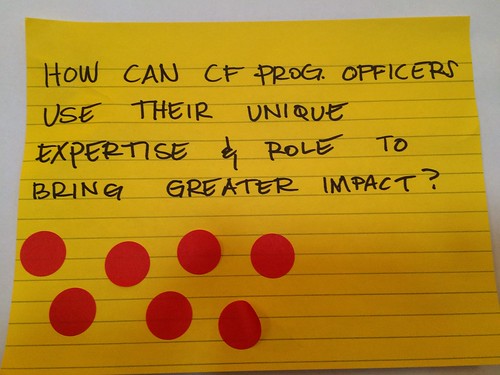
Last week I was lucky enough to facilitate a mini-innovation lab for 60 community foundation program officers at the first meeting of ProNet during the Council on Foundations conference in Cleveland, Ohio that celebrated 100 years of community philanthropy. To facilitate the lab, I used human centered design techniques (for a good overview see Jen Bokoff’s terrific overview post here) and more specifically the Luma Institute methods (for more, see my post here.)
The intent was to provide a deep dive for program officers to reflect on the way they currently work, identify what needs to change to create more impact, and come up with some prototypes. To set the stage for this exploration, Bill Somerville, founder and President of Ventures Foundation shared some ideas from his experience. He spoke about the need for the model of community foundation philanthropy to innovate. He talked about the importance of trust, getting out of the office and understanding community issues first hand,become more agile in decision-making, encourage young people to participate in philanthropy, poverty funding, be willing to take risks, and more. His remarks are on the Ventures Foundation blog and can also be found in his book, Grassroots Philanthropy. (Gabriel Kasper from Monitor Institute keynoted the main conference discussing “What’s Next for Community Philanthropy” which embodies many of these themes and provides tools for community foundations to tackle them).
Individual and Group Understanding of the Challenges for Community Philanthropy
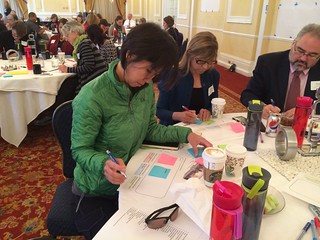
Participants were tasked with an active listening and reflection exercise after Bill’s keynote and Q/A. We used “Rose, Bud, Thorn” exercise where they identified ideas that were roses (something they were already doing well), thorns (challenges), or buds (opportunities to implement). Following this exercise, I facilitated an affinity map of the themes on the wall. This exercise allows participants to share their experience and views on the issues, but once the map was created it gives everyone a landscape view of the issues and challenges.
From the facilitator’s point of view, there are a couple of ways to facilitate this exercise. You can have everyone post their sticky notes on the wall and then do a quick, broad sort into themes and then discuss each theme with the full group. The other way to facilitate is to ask for someone to share, name it as a theme, and ask others to share and add to the wall. Then, move to the next theme. I done both ways multiple times with different size groups, content, room configurations, and contexts. I’ve begun to see some patterns about how to best facilitate this exercise in different contexts — one of the values of living in a set of techniques over a period of a year or longer, which I’ve committed to do for design thinking facilitation.
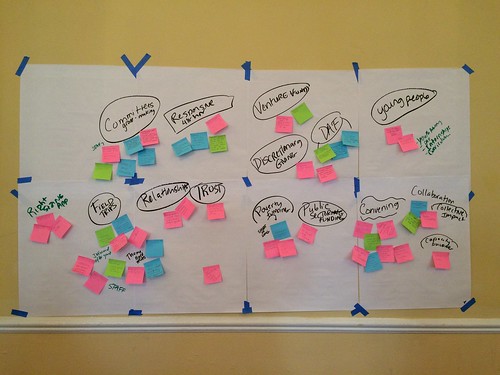
From this base of group and individual looking and understanding, I facilitated an activity where participants worked in teams to re-frame the design challenge question by broadening it and narrowing it. We were able to review the questions generated from each team and look for patterns. Visualize the Vote is a great technique, not so much to “force” people to consensus, but to uncover additional insights about framing the problem. What was interesting about the questions is that they fell into two patterns: focusing on internal culture change or program development. The second framing is where the energy in the room was, so we went with that. What I also love about this process is that allows for emergence of the unexpected.


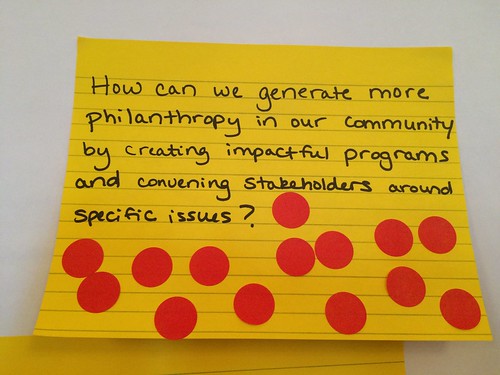
After landing on a single question, I facilitated a collective brainstorm activity that generated many ideas to address the question. I’ve facilitated this exercise many times and it never fails that participants enjoy it. I always hear laughter and feel a lot of creative energy as people generate ideas. The final step was to have teams work on developing concepts or prototypes. Each of the ten teams generated amazing concepts for community engagement and feedback to identify initiatives for community philanthropy. Here are a couple of concepts:
1. Shark Bank

This was modeled after “Shark Tank,” but the idea is to allow anyone in the community to pitch a game changing idea that could have impact in addressing a community need. This competition would have a community voting process and the most promising ideas would get seed funding and coaching to make and share their impact.
2. Retreat on the Street

This idea takes the traditional board and staff retreat to create a strategic plan and turns it on its head. The retreat would be out in the open and get input and ideas for strategic grassroots philanthropy.
3. Big Idea Day
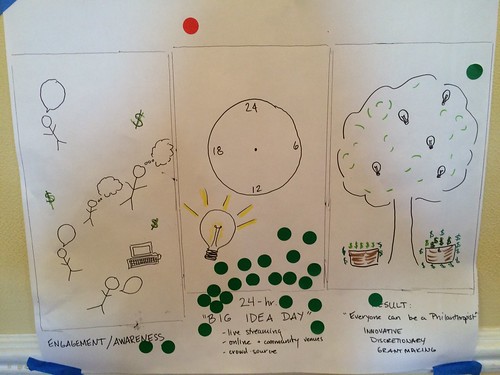
This concept was to have a 24 hour “Big Idea Day,” where ideas for community philanthropy to solve issues would be crowd sourced. There would be both an online and offline site. The best ideas would be given small discretionary giving grants to test out the idea.

Each team got to present their idea to the group. Afterwards, I facilitated a reflective conversation about the various ideas – what were the patterns? What is actionable? How could they imagine developing and implementing a concept? Most of the ideas were about opening up, working more transparently, engaging community, and co-creating solutions.
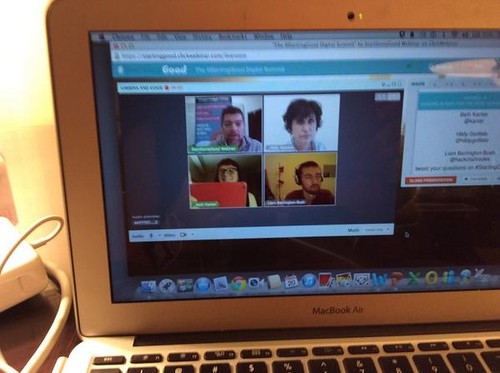
In a moment of kismet, the next day I participated in the Starting Good virtual summit in an online discussion about the question, “What does it take for organizations to work more transparently or in a human way?” My fellow panelists included Hildy Gottlieb,Creating the Future and Liam Barrington Bush, Anarchists in the Boardroom who both work with organizations that living some of the prototypes imagined by the program officers. One of the points that discussed was how to get started working more transparently, and of course it is about taking small steps and risks and iterating. Design thinking methods are great way to identify and articulate some of those first step ideas.
Has your organization used design thinking to rethink the way it works? Is your organization or community foundation trying to take the first few steps towards working more transparently and engaging the community? How are you taking those steps? How are you iterating and learning along the way?
Beth Kanter is a consultant, author, influencer. virtual trainer & nonprofit innovator in digital transformation & workplace wellbeing.
